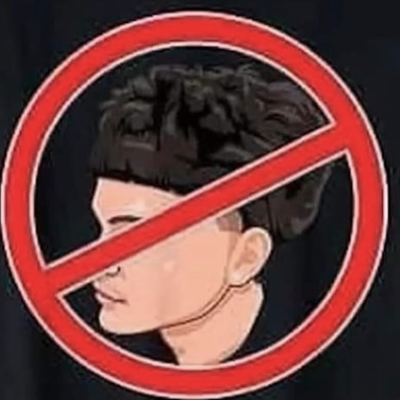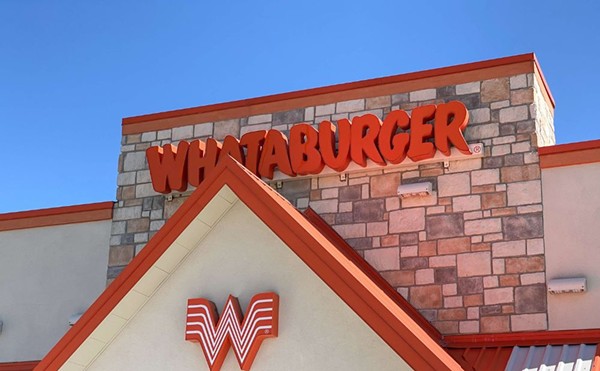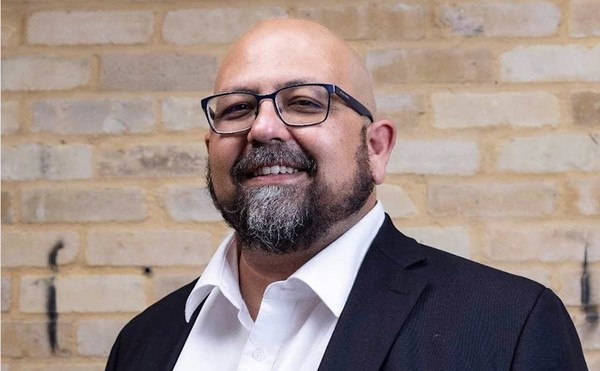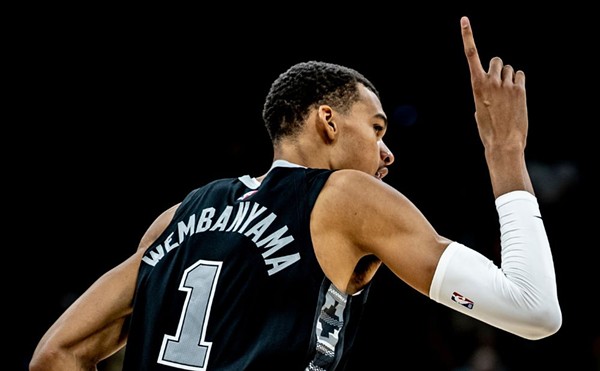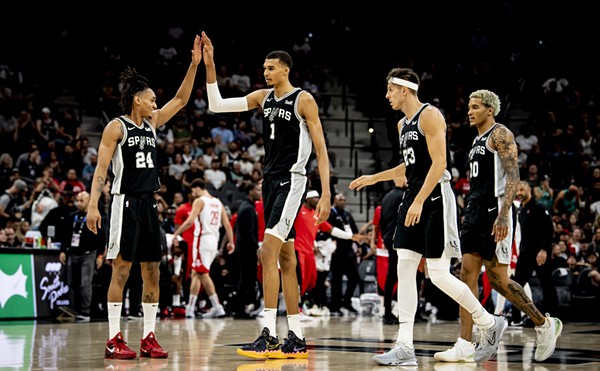Click to see our Lowrider photo gallery.
The first lowrider Victor Stewart customized was a 1967 Chevrolet pickup his father gave him. Most people saw a heap of junk, Stewart saw a canvas. It was 1979. The skills he learned in Body and Paint class at Brackenridge High School suddenly became practical. He chopped four inches off the cab. Chromed the undercarriage. Upholstered the interior in velvet. Painted the car a rich black. And as a final touch, Stewart installed the hydraulics, that mechanically intricate series of pumps, motors, and fluid allowing four ton cars to rise, fall, hop, and cruise, low and slow. It was, he claims, the first lowrider in San Antonio with hydraulics.
Stewart still has the truck. It sits in his Eastside garage sharing space with five ’39 Chevys, two from 1941, a ’42 pickup, and his latest creation, a customized 1947 Chevy convertible, built from the ground up. He’ll debut the new lowrider at this weekend’s 31st Annual Lowrider Festival, sponsored by Centro Cultural Aztlan.
It’s a perfect fit: an old school veterano and a 30-year-old car show. Both dedicated to promoting lowriders as Chicano art, and both still going strong.
Like with most forms of folk art, the mythic origins of lowriding remain unclear. Most agree, however, that it began in Southern California, during that particular post-WW II nexus of hot rod car culture and second-generation Mexican American kids. Gringo hot rodders wanted their cars to ride high. Pachucos, ever defying the mainstream, wanted theirs to ride low. It was style over speed. Y qué.
Heavy sandbags in the trunk gave way to modified army surplus hydraulic pumps, scraping boulevards across Aztlan ever since. The ingrained old world custom of nightly strolls around the Mexican village plaza was updated on this side of the border to an urban street version with cars. Cruising was born.
It was an American art form invented and practiced by Chicanos.
Maligned as hoodlums or thugs, and harassed by the cops, the Mexican kids and their blowtorches nevertheless continued with their baroque and inventive modifications of paint, metal, and chrome. And their canvases expanded: ’64 Impalas; ’49 Chevy bombs; bicycles.
Los Angeles-based artist Ruben Ortiz Torres, who has devoted much of his work to exploring and learning from lowriders, has always looked to the customizers for artistic inspiration.
“I consider them more interesting than art,” he says, “the cars are performative, they function as sculptures, and they work as cultural expressions reflective of a particular community.”
At the Centro Cultural Aztlan, a community-based arts organization that formed in 1977, the analysis hits home. This, after all, is the SA arts center that began the annual Día de los Muertos celebration way before the holiday became hip, and commemorates the signing of the Treaty of Guadalupe Hidalgo as a critical act.
A few years after the Centro began sponsoring the lowrider show, the arts center went to the City of San Antonio for funding to expand the public event. The City was skeptical. We can’t give public money for a car show, they told the Centro.
Ramón Vásquez y Sánchez, then the artistic director of the Centro, and the originator of the Lowrider show, had a counter argument, “I told them,” he said, “that this is mobile public art coming from the barrio.’’
The city agreed. They gave Centro Cultural the grant.
Lowrider shows these days come in two basic varieties: shows promoted for money and shows promoting cultura. Sponsored spectacle versus content. Bikini babes versus family fun. Sort of like Hollywood blockbusters competing against indie movies. Not that there’s anything wrong with Spider Man 4, but sometimes it’s great to have a little Mosquita y Mari thrown into the mix. The only people making money off the big lowrider shows are the sponsors.
As Bobby Garza from the Rollerz Only Club explained it, an out-of-town weekend show means at least four days away from home. This includes setting up the show car, travel, the event itself, and the return trip. Factor in the cost of gas, hotel nights, and sprucing up the car, and a $500 dollar prize for best looking Impala seems pretty paltry.
The focus of Centro Cultural’s Lowrider Festival is recognized by many of the lowriders themselves as being a different kind of show.
“It’s a family event you can bring your kids to,” says Manuel Galván of the OG Traditions car club, “They give back to the community.”
Back in Victor Stewart’s garage, the veterano gets his car ready for the upcoming weekend show.
On his garage wall hang all the various plaques representing the local car clubs Stewart has joined at one time or another. It’s a snapshot representing the long and rich history of lowriders in San Antonio: The Dutchmen; Low N Slow; Road Jivers; City Style; Hustling Chariots; The Gear Grinders; Alamo City Rods; and the club Stewart started way back in the day, 1979, the 1st Impressions, the oldest car club in San Antonio.
He shows me a few photos of his son.
In one picture from a photo album, Stewart teaches the six year old how to sand paint off a car. In another photo, this one off of Stewart’s smart phone, he shows me his now grown son’s own lowrider, an award-winning 1939 Chevrolet Laser Deluxe painted Day-Glo orange. Stewart has taught his son all that he knows, passing the lowrider tradition on to the next generation.
Low Rider Festival
$7 adults, free 14 & under
11 am-7pm Sat, April 7
Centro Cultural Aztlan
1800 Fredericksburg
(210) 432-1896
centroculturalaztlan.50megs.com


